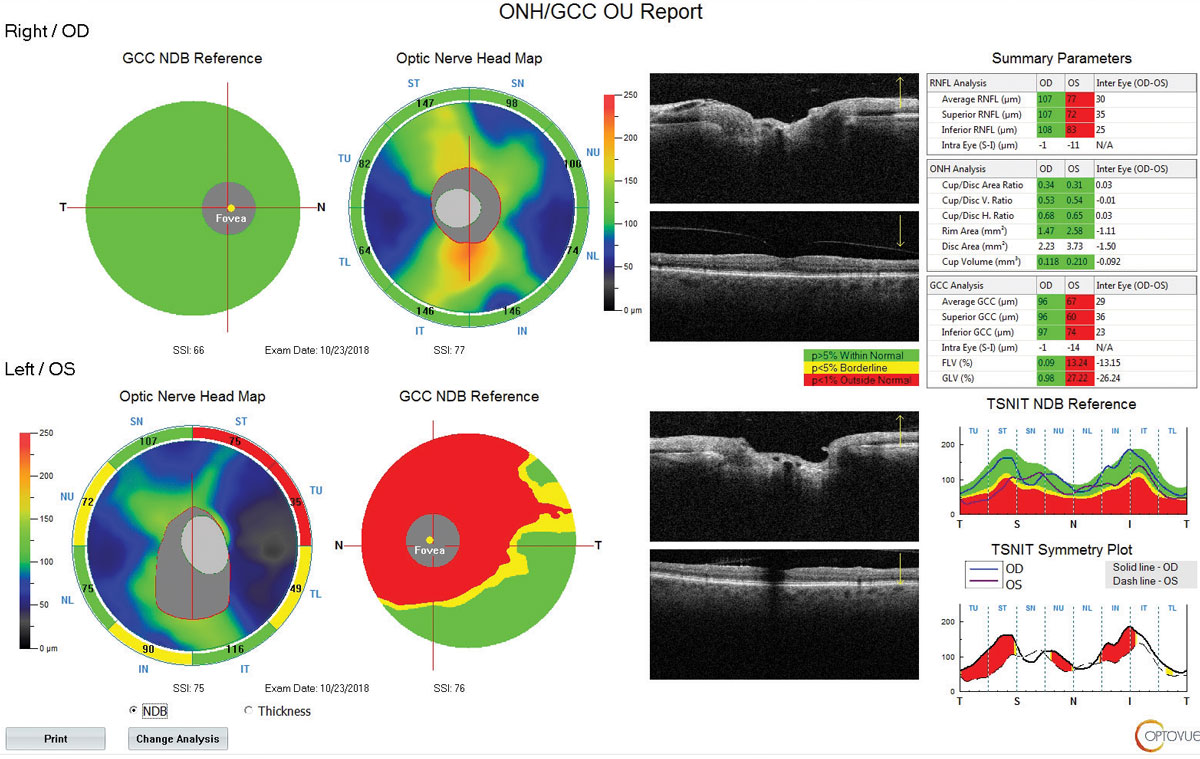 |
|
Following assessment of systemic and ocular correlated factors for GCC thickness, investigators uncovered a significant connection between diabetic mellitus and hypertension status. Photo: Michael Cymbor, OD. Click image to enlarge. |
Research findings, recently published in the journal BMC Ophthalmology, revealed a notable interaction between blood pressure status and diabetic mellitus (DM). Among individuals with DM and uncontrolled hypertension, the average ganglion cell complex (GCC) thickness was higher. Additional research is needed, according to the study authors, to investigate changes in ganglion cells as a non-invasive approach to detect neuron alterations in these individuals.
Study participants, aged 50 years and older, were recruited from October to November 2018. All subjects received a comprehensive systemic and ocular exam. In this analysis, blood pressure status was graded as normotension, controlled hypertension and uncontrolled hypertension based on blood pressure measurements and the use of any medication for hypertension.
Among 1,415 screened individuals (2,830 eyes), 1,117 eyes were included in the final analysis. Of the enrolled participants, 341 participants (30.5%) had normotension, 202 (18.1%) had controlled hypertension and 574 (51.4%) had uncontrolled hypertension. Diabetes was found in 259 (23.2%) of the study subjects.
Data showed a signifcant interactive relationship between diabetic mellitus with uncontrolled hypertension status, the study authors reported. In a subgroup of 574 subjects with uncontrolled hypertension, the researchers observed an association between diabetic mellitus and an increased average of ganglion cell complex thickness.
“We assessed systemic and ocular determinants of GCC thickness and revealed a significant interactive relationship between diabetic mellitus and blood pressure status,” the study authors wrote in their recent BMC Ophthalmology paper. “GCC thickness is increased in individuals with DM and uncontrolled hypertension. This might be an early sign for macular edema and should be considered in the measurement of ganglion cell complex.
“Further study,” they concluded, “is warranted to explore ganglion cells changes in patients without clinically diagnosed retinopathy but with diabetic mellitus and uncontrolled hypertension, which might provide non-invasive methods to detect neuron alterations in these individuals.”
Li M, Zhang Q, Zhang Y, et al. Retinal ganglion cell complex thickness in subjects with diabetes mellitus and uncontrolled hypertension in China. BMC Ophthalmol. August 27, 2024 [Epub ahead of print]. |


